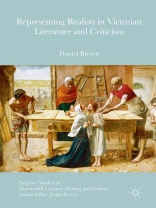This book is about the historical moment when writers and critics first used the term “realism” to describe representation in literature and painting. While scholarship on realism tends to proceed from an assumption that the term has a long-established meaning and history, this book reveals that mid-nineteenth-century critics and writers first used the term reluctantly, with much confusion over what it might actually mean. It did not acquire the ready meaning we now take for granted until the end of the nineteenth century. In fact, its first definitions came primarily by way of example and analogy, through descriptions of current practitioners, or through fictionalized representations of artists. By investigating original debates over the term “realism, ” this book shows how writers simultaneously engaged with broader concerns about the changing meanings of what was real and who had the authority to decide this.
สารบัญ
Introduction.- 1. Pre-Raphaelitism as Realism.- 2. Realistic Poetry.- 3. Realist Propaganda.- 4. The Realism of Doubt.- 5. The Realist Con Artist.- Afterword.- Bibliography.- Index.-
เกี่ยวกับผู้แต่ง
Daniel Brown earned his Ph.D. in English, with a specialization in British Victorian literature, from the University of Florida, USA in 2012. His research interests include realism and the relationships between verbal and visual representation. He has published articles on Elizabeth Barrett Browning, sensation fiction, and Paul Gauguin.












